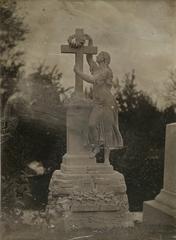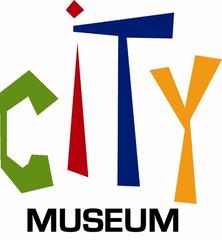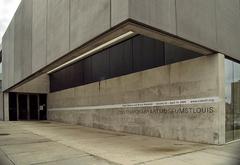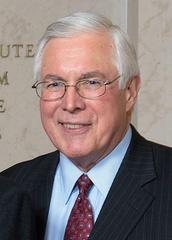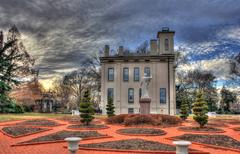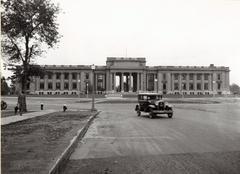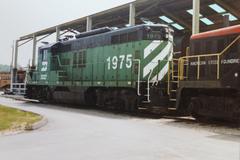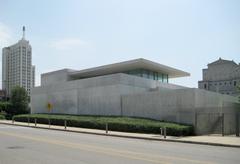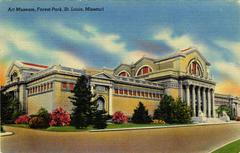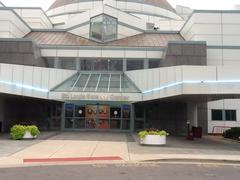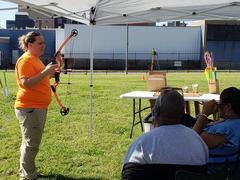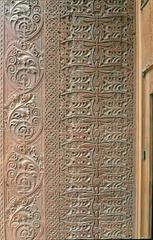Rumbold Park Visiting Hours, Tickets, and Travel Guide: St. Louis Historical Sites
Date: 03/07/2025
Introduction
Rumbold Park in St. Louis, Missouri, stands as a vibrant symbol of the city’s commitment to accessible green spaces and progressive social reform. Established in the early 20th century, the park owes its existence to the advocacy of Charlotte Rumbold, a pioneering social reformer who championed equitable recreational spaces. Today, Rumbold Park is an inviting urban oasis, offering playgrounds, sports courts, shaded walkways, and open lawns that cater to a diverse community. Its historical legacy, community events, and ongoing preservation make it a must-visit destination for families, tourists, and residents seeking to connect with St. Louis’s cultural heritage and natural beauty. (Wikipedia: History of St. Louis (1905–1980) | St. Louis Parks Department | Explore St. Louis)
Table of Contents
- Early 20th Century Civic Reform and the Birth of Rumbold Park
- Charlotte Rumbold: Legacy and Influence
- The Park’s Role in Urban Renewal
- Park Features and Amenities
- Visiting Information: Hours, Access, and Tips
- Accessibility and Community Stewardship
- Special Events and Community Life
- Nearby Attractions
- Frequently Asked Questions (FAQ)
- Visitor Experience and Historical Interpretation
- Key Dates and Milestones
- Summary and Recommendations
- References
Early 20th Century Civic Reform and the Birth of Rumbold Park
Rumbold Park’s origins are rooted in the civic reform era of early 1900s St. Louis. As the city grappled with industrialization and overcrowding, reformers like Charlotte Rumbold and the Playground Association of America pushed for more public parks and playgrounds to improve urban living. By 1909, these efforts led to the creation of 16 parks, totaling over 150 acres, with Rumbold Park embodying the movement’s focus on democratic, accessible recreation (Wikipedia: History of St. Louis (1905–1980)).
Charlotte Rumbold: Legacy and Influence
Charlotte Rumbold’s influence was pivotal in shaping St. Louis’s park system. As a parks committee member and national advocate for public recreation, she believed parks fostered both physical well-being and social equity. The park named in her honor reflects her vision of green spaces as democratic gathering places, accessible regardless of socioeconomic background (Wikipedia: History of St. Louis (1905–1980)).
The Park’s Role in Urban Renewal
Rumbold Park was established to revitalize declining neighborhoods and provide safe, healthy environments for recreation. This park, along with others developed during the period, exemplifies how community-driven green spaces can spur urban renewal, foster neighborhood pride, and serve as catalysts for improvement.
Park Features and Amenities
- Playgrounds and Open Lawns: Ideal for families and informal recreation.
- Sports Facilities: Basketball courts, walking paths, and areas for group exercise.
- Picnic Areas: Shaded tables and benches for gatherings.
- Natural Beauty: Mature trees, landscaped gardens, and clear sightlines for safety and relaxation.
The park’s design encourages community interaction and provides a tranquil retreat amid the city bustle.
Visiting Information: Hours, Access, and Tips
- Hours: Open daily from dawn to dusk (typically 6:00 AM – 9:00 PM).
- Admission: Free, with no tickets required.
- Location: At the intersection of North Spring and North Market Avenues in the Jeff Vander Lou neighborhood; address for GPS: 3300 Nebraska Avenue, St. Louis, MO 63118 (stlouiscitytalk.com).
- Directions and Parking: Accessible by car with free on-street parking; public transit options are available via local MetroBus routes.
Accessibility and Community Stewardship
- Wheelchair Accessibility: Paved, stroller- and wheelchair-friendly paths are available, though some uneven surfaces and occasional obstructions may exist.
- Safety: Community-led clean-up and watch programs help maintain a secure environment. Visitors are encouraged to visit during daylight hours and remain vigilant.
- Maintenance: Trash cans and recycling bins are provided, but proper use and community involvement are vital for upkeep.
Special Events and Community Life
Rumbold Park regularly hosts neighborhood picnics, outdoor movie nights, seasonal festivals, and community clean-up days. These events foster local engagement and enrich the cultural identity of the area (Neighborhood Strategies).
Nearby Attractions
Enhance your visit by exploring:
- Historic Shaw Neighborhood: Known for vibrant shops and eateries.
- Forest Park & Tower Grove Park: Larger St. Louis parks with museums and gardens.
- Missouri History Museum: Located in Forest Park for deeper historical context.
- Former Sportsman’s Park site: Now the Herbert Hoover Boys and Girls Club (stlouismo.com).
Frequently Asked Questions (FAQ)
Q: What are Rumbold Park’s hours?
A: Open daily from dawn to dusk, typically 6:00 AM – 9:00 PM.
Q: Is there an entrance fee?
A: No, admission is free.
Q: Are pets allowed?
A: Yes, pets must be leashed and cleaned up after.
Q: Is the park accessible for people with disabilities?
A: Most paths are accessible, though some areas may have uneven surfaces.
Q: Are there guided tours or special events?
A: No official tours, but community events are frequent—check local listings or the St. Louis Parks Department for updates.
Visitor Experience and Historical Interpretation
Interpretive signs and community-led walks offer context about the park’s origins and Charlotte Rumbold’s legacy. The park’s location and history provide a tangible link to St. Louis’s reform movement and ongoing commitment to public amenities (Explore St. Louis: Historic St. Louis Guide).
Key Dates and Milestones
- 1903–1909: Civic reformers, including Charlotte Rumbold, drive the creation of parks and playgrounds, including Rumbold Park.
- Early 20th Century: Park is established as part of a wave of civic improvements in St. Louis.
- Mid–Late 20th Century: Facilities are updated to meet changing community needs.
- 21st Century: Ongoing preservation and accessibility improvements ensure continued relevance.
Summary and Recommendations
Rumbold Park is more than a neighborhood green space—it is a symbol of community action, historical vision, and the ongoing impact of public parks on urban life. Its accessible amenities, historical significance, and commitment to inclusivity offer both a peaceful retreat and a living lesson in civic engagement. Visitors are encouraged to:
- Plan visits during daylight for safety.
- Bring water, snacks, and picnic supplies.
- Participate in community events and stewardship efforts.
- Use the Audiala app and follow local social media for timely updates.
Whether seeking recreation, history, or a quiet moment in nature, Rumbold Park stands as a testament to St. Louis’s enduring community spirit.
References
- Wikipedia: History of St. Louis (1905–1980)
- St. Louis Parks Department
- Secret Attractions: Hidden Historical Landmarks in St. Louis
- Explore St. Louis: Historic St. Louis Guide
- Neighborhood Strategies: Why Parks Are Important for Community Building
- Summit Design and Engineering Services: Why Parks Are Valuable to Communities
- Jeff Vander Lou Parks
- stlouiscitytalk.com: Rumbold Park
- Official Rumbold Park Page
- Explore St. Louis: Parks Guide
- Travellers Worldwide: Best Time to Visit St. Louis
